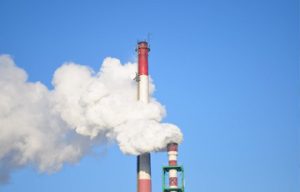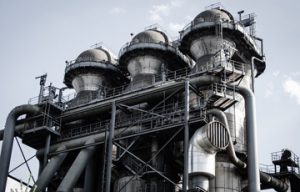Activated carbon, often referred to as the unsung hero of filtration and purification, plays a vital role in an array of industries across the globe. Whether it's ensuring clean drinking water, purifying the air we breathe, or refining essential processes in manufacturing, activated carbon is at the forefront of maintaining the quality and safety of our environment and products.
In the vast world of activated carbon, India has emerged as a significant player, not only as a consumer but also as a manufacturer of activated carbon in India. This remarkable growth has given rise to a booming industry of homegrown experts in the field, offering top-quality solutions to meet the diverse needs of various sectors. Furthermore, India has also evolved into a prominent supplier of activated carbon in India, providing these valuable resources not only to domestic industries but to the global market as well.
In this blog post, we delve into the different types of activated carbon, their unique properties, and how to choose the right activated carbon for your specific application. We will also explore the key players in the manufacturing and supply of activated carbon within India to choose from and why their expertise matters when it comes to finding the perfect carbon solution for your needs. So, let's embark on a journey through the world of activated carbon and discover how India is making its mark in this vital industry.
What is Activated Carbon?
Activated carbon, often referred to simply as "activated charcoal," is a remarkable and versatile material with a wide range of applications in various industries. It is created from carbon-rich organic materials, such as wood, coconut shells, peat, sawdust, and even coal. The term "activated" in activated carbon signifies that the material has undergone a specific activation process, which enhances its adsorption properties and increases its surface area.
The activation process involves exposing the raw carbon source to high temperatures (typically between 600 to 1,200 degrees Celsius) in the presence of a gas, such as steam or carbon dioxide. This process causes the material to undergo chemical reactions that create a highly porous and intricate internal structure. The result is a substance with an exceptionally large surface area, typically ranging from 300 to 2,500 square meters per gram. To put this into perspective, one gram of activated carbon can have a surface area roughly equivalent to a football field.
The unique porous structure of activated carbon is made up of a vast network of microscopic pores and tunnels, which provide an immense number of sites for adsorption. Adsorption is the process by which molecules and particles adhere to the surface of a solid or liquid material. Activated carbon excels in this regard, making it highly effective at trapping and retaining various substances, including impurities, pollutants, and contaminants.
Activated carbon is used extensively for its adsorption properties, making it an essential component in a wide range of applications, including:
Water Treatment: Activated carbon is widely used to remove impurities from drinking water and wastewater, such as chlorine, organic compounds, pesticides, and unpleasant odors.
Air Purification: In air filtration systems, activated carbon helps eliminate volatile organic compounds (VOCs), airborne chemicals, and noxious odors, resulting in cleaner and fresher air.
Food and Beverage Processing: The food and beverage industry uses activated carbon for decolorization and deodorization in processes like sugar refining, alcohol production, and edible oil purification.
Medical and Pharmaceutical: In the medical field, activated carbon is used in emergency treatments for poisoning, as it can adsorb harmful substances. It's also employed in the pharmaceutical industry to purify various drugs.
Environmental Remediation: Activated carbon is used to clean up contaminated soils and groundwater, helping to reduce the environmental impact of chemical spills and pollution.
Gold and Precious Metal Recovery: In mining and metallurgy, activated carbon is used to extract gold and other precious metals from ore.
Gas Masks and Respirators: The use of activated carbon in protective masks helps filter out harmful gasses and chemicals in industrial and military settings.
The versatility of activated carbon, coupled with its remarkable adsorption properties, has made it an indispensable tool in various industries. Whether it's ensuring safe drinking water, maintaining air quality, or refining industrial processes, activated carbon plays a crucial role in enhancing our quality of life and safeguarding the environment.
Types of Activated Carbon:
Activated carbon, as a versatile adsorbent, comes in various forms, each tailored to specific applications. Two common types are acid-washed activated carbon and unwashed activated carbon. These distinctions are crucial as they impact the material's performance and suitability for various purposes.
1. Unwashed Activated Carbon:
Unwashed activated carbon, as the name suggests, is in its raw form without undergoing any washing or post-treatment processes. This type of carbon retains the impurities and residues from the activation process, which can influence its applications and adsorption capabilities.
Characteristics of Unwashed Activated Carbon:
Residual Ash Content: Unwashed activated carbon typically contains higher levels of residual ash or inorganic impurities, which can affect its purity and adsorption efficiency.
Higher Initial Adsorption Capacity: Due to the presence of these impurities, unwashed activated carbon may exhibit a higher initial adsorption capacity, especially for certain contaminants.
Less Selective: It can be less selective in adsorbing specific substances, as the impurities can interfere with the adsorption process.
Applications of Unwashed Activated Carbon:
Gold Mining: Unwashed activated carbon is commonly used in gold mining to adsorb gold from cyanide leach solutions.
Certain Gas Purification: In applications where high initial adsorption capacity is critical and the presence of impurities is acceptable, unwashed activated carbon may be suitable.
2. Acid-Washed Activated Carbon:
To enhance the purity and selectivity of activated carbon, the acid-washing process is employed. Acid-washed activated carbon undergoes a treatment where it is washed with a dilute acid, typically hydrochloric acid, to remove impurities, ash, and other residues, resulting in a purer form of carbon.
Characteristics of Acid-Washed Activated Carbon:
Lower Ash Content: Acid-washing significantly reduces the ash content and impurities, leading to a purer carbon product.
Higher Selectivity: Acid-washed activated carbon is often more selective in adsorbing specific target substances, as the impurities are removed.
Consistent Performance: Acid-washed carbon provides a more predictable and consistent performance, making it a preferred choice in many applications.
Applications of Acid-Washed Activated Carbon:
Water and Air Purification: Acid-washed activated carbon is commonly used in water and air treatment systems to remove specific contaminants with high efficiency.
Food and Beverage Processing: In industries where purity is paramount, such as in food and beverage processing, acid-washed carbon is preferred for decolorization and deodorization.
Pharmaceutical and Medical Uses: Acid-washed carbon is crucial in pharmaceutical processes where precision and consistency are essential.
The choice between acid-washed and unwashed activated carbon depends on the specific requirements of the application. While unwashed carbon may offer higher initial adsorption capacity, acid-washed carbon is often favored for its purity and selectivity. Understanding the characteristics of these two types of activated carbon is key to making an informed decision for optimal performance in your particular application.
Granular Activated Carbon (GAC)
Granular Activated Carbon (GAC) is one of the most commonly used forms of activated carbon due to its versatility and efficiency. It is a type of activated carbon that consists of small granules or beads with a high surface area, making it suitable for a wide range of applications. GAC can be further categorized based on its source material and activation method.
Characteristics of Granular Activated Carbon (GAC):
High Surface Area: GAC possesses a large surface area due to its porous structure, which allows it to adsorb a wide range of contaminants effectively.
Varied Particle Sizes: GAC is available in various particle sizes, which can be tailored to specific applications. Smaller particles offer higher adsorption rates, while larger ones provide better flow characteristics.
Diverse Raw Materials: GAC can be manufactured from a variety of carbon-rich sources, including coconut shells, wood, coal, and lignite. The choice of source material can impact its adsorption properties.
Types of Granular Activated Carbon Based on Source Material:
Coconut Shell GAC: GAC made from coconut shells is known for its high adsorption capacity, low ash content, and excellent taste and odor removal capabilities. It is often used in water filtration and air purification systems, as well as in the food and beverage industry.
Wood GAC: Wood-based GAC is appreciated for its cost-effectiveness and is used in applications like industrial processes, gas phase purification, and wastewater treatment.
Coal GAC: Coal-based GAC is valued for its hardness and is commonly used in gas phase applications and for removing impurities from liquids.
Types of Granular Activated Carbon Based on Activation Method:
Steam-Activated GAC: This type of GAC is created by exposing the raw carbon source to high-temperature steam, resulting in a highly porous structure. It is widely used in water treatment, air purification, and industrial processes.
Chemical-Activated GAC: Chemical activation involves impregnating the carbon source with a chemical, like phosphoric acid or zinc chloride, before activation. This method often produces GAC with specific adsorption properties suited to niche applications.
Applications of Granular Activated Carbon (GAC):
Water Treatment: GAC is extensively used in water filtration systems to remove contaminants like chlorine, organic compounds, heavy metals, and unpleasant tastes and odors.
Air Purification: GAC is employed in air purification systems to adsorb volatile organic compounds (VOCs) and other airborne pollutants, improving indoor air quality.
Industrial Processes: GAC is crucial in various industrial applications, such as the purification of gases, chemicals, and pharmaceutical products.
Food and Beverage Industry: GAC is utilized for decolorization and deodorization in the production of beverages and food items.
Environmental Remediation: GAC plays a vital role in cleaning up contaminated soils and groundwater, aiding in environmental restoration efforts.
Granular Activated Carbon's versatility, high adsorption capacity, and adaptability to different source materials and activation methods make it an indispensable tool in numerous industries. The choice of GAC type depends on the specific requirements of the application and the desired adsorption properties.
Powdered Activated Carbon (PAC)
Powdered Activated Carbon (PAC) is a fine, powdered form of activated carbon known for its exceptional adsorption capabilities and ease of use in various applications. PAC is finely ground, providing a high surface area for efficient adsorption of contaminants. Here, we explore the characteristics, production methods, and applications of PAC.
Characteristics of Powdered Activated Carbon (PAC):
Fine Particle Size: PAC is composed of very fine particles, typically with a diameter of less than 0.18 millimeters. This small particle size increases the surface area available for adsorption.
High Adsorption Capacity: Due to its fine texture and large surface area, PAC exhibits high adsorption capacity, making it effective at removing a wide range of contaminants.
Rapid Adsorption Kinetics: The small particle size allows for quick adsorption of impurities, which is particularly advantageous in applications with short contact times.
Production Methods of Powdered Activated Carbon (PAC):
Chemical Activation: PAC can be produced through chemical activation by impregnating the precursor material with an activating agent, like phosphoric acid or zinc chloride. This is followed by high-temperature carbonization and activation, resulting in highly porous and adsorbent carbon particles.
Physical Activation: Physical activation involves the use of high-temperature steam to carbonize and activate the precursor material. This process is known for producing PAC with specific adsorption characteristics.
Applications of Powdered Activated Carbon (PAC):
Water and Wastewater Treatment: PAC is widely used in water treatment processes, including the removal of organic contaminants, taste and odor compounds, chlorine, and colorants.
Industrial Processes: In industries like chemical manufacturing and pharmaceuticals, PAC is applied for the purification of chemicals, solvents, and products.
Gas Phase Applications: PAC is utilized to remove impurities and volatile organic compounds (VOCs) from gas streams, contributing to improved air quality.
Food and Beverage Industry: PAC is an essential ingredient for decolorizing and purifying beverages, such as sugar, syrups, and edible oils.
Environmental Cleanup: In environmental remediation efforts, PAC plays a role in soil and groundwater treatment, particularly in the removal of organic contaminants.
Medical and Pharmaceutical Uses: PAC can be employed for the purification of drugs, APIs (Active Pharmaceutical Ingredients), and in medical detoxification.
Benefits of Powdered Activated Carbon (PAC):
High Adsorption Efficiency: PAC's fine particle size provides rapid and efficient adsorption of impurities.
Easy Dispersion: It can be easily dispersed in water or other liquid media, simplifying its application in various processes.
Precise Dosing: PAC allows for accurate control of dosing rates, making it suitable for systems with variable contaminant levels.
Reduced Footprint: The compact nature of PAC makes it a space-efficient choice for treatment systems with limited space.
Powdered Activated Carbon is a powerful adsorbent with a wide range of applications, especially in situations where rapid adsorption and precise dosing are required. Its effectiveness in treating both water and gases, coupled with its ease of use, makes it a valuable tool in industries that prioritize efficient contaminant removal.
How to Choose the Right Activated Carbon Type for Specific Applications
Activated carbon is not a one-size-fits-all solution. Selecting the appropriate type of activated carbon for your specific application is crucial to ensure optimal performance and cost-effectiveness. Here are steps to guide you through the process of choosing the right activated carbon type for your needs:
1. Identify Your Application:
Before you start your search for the ideal activated carbon, define your application and objectives. Consider the following:
Contaminants: Determine the specific contaminants or impurities you need to remove. Are you dealing with organic compounds, heavy metals, volatile organic compounds (VOCs), odors, or other substances?
Medium: Identify whether you're working with liquids (e.g., water or chemicals) or gases (e.g., air or industrial emissions). The medium plays a significant role in the choice of activated carbon.
Flow Rate and Contact Time: Understand the flow rate and contact time the activated carbon will be subjected to. Faster flow rates may require carbon with smaller particle sizes for efficient adsorption.
2. Consider the Type of Activated Carbon:
Depending on your application, you may choose from various types of activated carbon, including:
Powdered Activated Carbon (PAC): Ideal for applications with fast adsorption requirements, such as water and wastewater treatment or medical uses.
Granular Activated Carbon (GAC): Suitable for both liquid and gas phase applications, GAC offers a balance between adsorption capacity and flow rates.
Extruded Activated Carbon (EAC): Used when high mechanical strength and pressure drop control are essential, often in gas phase applications.
Activated Carbon Fiber (ACF): A specialized type with a fibrous structure, suitable for applications that require a high surface area and mechanical strength, like air filtration.
Impregnated Activated Carbon: Infused with additional chemicals to enhance its adsorption properties for specific contaminants.
3. Assess Adsorption Characteristics:
The adsorption capacity of activated carbon depends on factors such as surface area, pore size distribution, and the type of activated carbon. For different applications, consider the following:
Surface Area: Larger surface areas generally result in higher adsorption capacity. Ensure the selected carbon type offers sufficient surface area for your target contaminants.
Pore Size: Contaminants of various sizes require the right pore size distribution. For smaller molecules, choose activated carbon with micropores; for larger molecules, meso- or macropores may be more effective.
4. Evaluate the Source Material:
The source material used to create activated carbon, such as coconut shells, wood, coal, or others, can influence its adsorption properties. Consider the source material's characteristics, ash content, and purity.
5. Regeneration Potential:
For applications where activated carbon can be regenerated and reused, consider whether the chosen type of carbon is amenable to regeneration processes. This can significantly impact the long-term cost-effectiveness of the solution.
6. Environmental Impact:
In applications where sustainability is a concern, evaluate the environmental impact of the chosen activated carbon type, including its production process, source material, and disposal options.
7. Seek Expert Advice:
Consult with activated carbon experts or suppliers who can provide insights based on their experience and knowledge of your specific application. They can help you select the most suitable activated carbon type and provide valuable recommendations.
Choosing the right activated carbon type for your application is a critical step in ensuring efficient contaminant removal and achieving your desired results. By considering the nature of your application, adsorption characteristics, source material, regeneration potential, and seeking expert guidance, you can make an informed decision that meets your needs while optimizing cost-effectiveness and environmental impact.
Conclusion:
In the world of activated carbon, making the right choice is pivotal to success. Whether you're purifying water, enhancing air quality, refining industrial processes, or remediating the environment, the type of activated carbon you select directly impacts your outcomes. Understanding your application's unique requirements and considering factors like adsorption characteristics, source material, regeneration potential, and sustainability is essential for achieving your goals.
Activated carbon is a versatile and indispensable tool in a multitude of industries, and selecting the right type ensures efficiency and effectiveness. From Powdered Activated Carbon (PAC) for rapid adsorption in water treatment to Granular Activated Carbon (GAC) for balanced liquid and gas phase applications, the perfect choice can make all the difference.
When in doubt, seek expert guidance from trusted suppliers who can offer insights tailored to your specific needs. Their expertise can be invaluable in choosing the ideal activated carbon type and ensuring a successful outcome for your application.
About Jay Maa Bhavani Chemicals:
In India, Jay Maa Bhavani Chemicals stands as a reputable and reliable manufacturer and supplier of high-quality activated carbon products. With a commitment to excellence, we understand the importance of offering top-tier solutions to meet the diverse needs of our clients.
Our range of activated carbon products, including various types like Powdered Activated Carbon (PAC), Granular Activated Carbon (GAC), and more, are meticulously manufactured to meet stringent quality standards. Our source materials are carefully selected to ensure purity and efficiency in adsorption. We employ state-of-the-art production techniques, resulting in activated carbon with excellent surface area, pore size distribution, and adsorption capacity.
At Jay Maa Bhavani Chemicals, we take pride in our ability to tailor our activated carbon products to a wide array of applications, including water treatment, air purification, industrial processes, and environmental remediation. Our commitment to quality ensures that our products consistently deliver on performance and efficiency, exceeding client expectations.
In a world where clean water, fresh air, and sustainable industry practices are paramount, we understand the importance of providing activated carbon solutions that not only meet but exceed client expectations. Our quality products are engineered to address your specific needs, ensuring a cleaner, safer, and more sustainable future.
Choose Jay Maa Bhavani Chemicals for your activated carbon needs, and experience the difference that quality and expertise can make in achieving your application goals. Your success is our commitment.













